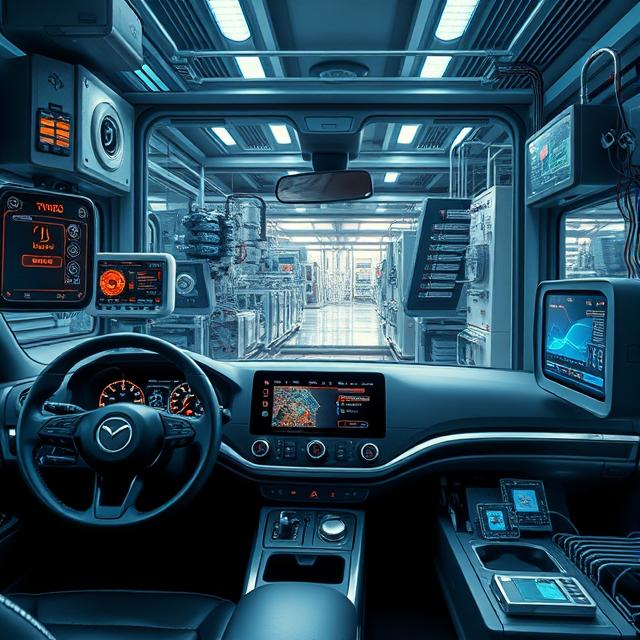In today’s connected world embedded systems work behind the scenes to power many devices and apps. From phones in our pockets to smart homes, factory machines, and medical tools, these smart systems mix hardware and software to do specific jobs without a hitch. This post will explore the world of embedded systems looking at their main ideas, uses, problems, and what’s next for this game-changing tech.
Getting to Know Embedded Systems
What Are Embedded Systems?
Embedded systems are special computer setups made to do certain jobs within bigger systems. Unlike regular computers that can run many different programs embedded systems focus on specific tasks and work within limits like size, power use, and processing speed.
Key Components of an Embedded System
An embedded system has these main parts:
- Processor: This acts as the system’s brain. It could be a microcontroller, microprocessor, or digital signal processor.
- Memory: This stores data and programs. It might include RAM, ROM, or flash storage.
- Input/Output Devices: These let the system interact with its surroundings. Examples are sensors that collect data and actuators that carry out actions.
- Real-Time Operating System (RTOS): Many embedded systems use an RTOS to handle tasks and resources well.
Types of Embedded Systems
Embedded systems come in different forms such as:
- Microcontroller-Based Systems: These compact systems have applications in home appliances.
- Microprocessor-Based Systems: These pack more power and you’ll often find them in complex devices like computers.
- Digital Signal Processor (DSP)-Based Systems: These specialize in processing signals, and you’ll see them in audio and video applications.
Applications Across Industries
You’ll find embedded systems everywhere, and they play key roles in several industries:
- Automotive: Engine control units and advanced driver-assistance systems use these.
- Aerospace: Avionics, navigation systems, and other applications rely on them.
- Consumer Electronics: TVs, cameras, and gaming consoles incorporate these systems.
- Industrial Automation: Machinery and process control depend on them.
- Healthcare: Medical devices like monitors and diagnostic equipment run on these.
The Architecture of Embedded Systems
Hardware Architecture
The hardware architecture of embedded systems includes:
- Microcontrollers and Microprocessors: These act as the main processing units.
- Sensors: These devices collect data from the surroundings.
- Actuators: These parts perform actions based on sensor data.
Software Architecture
Embedded systems also use specific software parts such as:
- Embedded Operating Systems: These control hardware and offer a base for applications.
- Device Drivers: These let the software talk to hardware parts.
- Middleware: Works as a link between different software apps.
- Application Software: The programs that do the main jobs of the embedded system.
Real-Time Operating Systems (RTOS)
RTOS play a key role in apps that need quick responses, like car safety systems. They make sure tasks finish within tight time limits.
Things to Think About When Designing Embedded Systems
When creating embedded systems, you need to think about several things:
- Power Consumption: Many embedded systems run on limited power sources so efficiency is key.
- Cost: Money limits often guide design decisions.
- Performance: The system needs to meet specific performance goals for its intended use.
- Reliability: Systems must work right under different conditions.
Challenges and Solutions in Embedded System Development
Overcoming Design Complexities
Designing embedded systems can be tricky because you need to co-design hardware and software and integrate the system well. Teams working on hardware and software can team up to tackle these issues.
Ensuring System Reliability and Security
Reliability is crucial in embedded systems for critical uses. Methods like fault tolerance and strong cybersecurity steps are vital to keep the system safe and sound.
Optimizing Power Consumption
Battery-saving design methods, like smart algorithms and rest modes, play a key role in making portable devices last longer.
Meeting Tough Performance Needs
Embedded systems often work under time-sensitive limits. Using RTOS and streamlining code can help meet these tough needs.
The Future of Embedded Systems
New Trends
Embedded systems have a bright future ahead, with developments like the Internet of Things (IoT) AI, machine learning, and edge computing pushing new ideas forward.
Progress in Hardware and Software Tech
Ongoing progress in both hardware and software is enabling stronger and more effective embedded systems opening doors to new uses and abilities.
Changes Across Many Fields
The integration of embedded systems will have a crucial impact on changing industries like smart cities autonomous vehicles, and healthcare. This will lead to better productivity and improved quality of life.
Ethical Considerations
As embedded systems become more common, we need to think about ethics related to privacy, security, and data protection. These issues will become more and more important. Developers must make these aspects a priority to build trust in their technologies.
